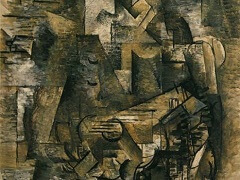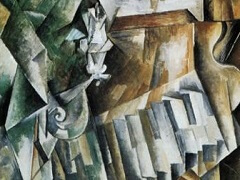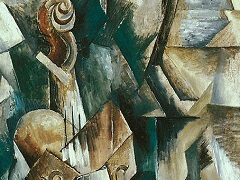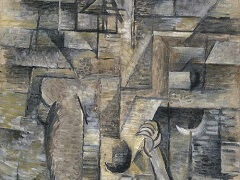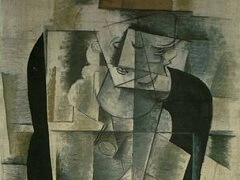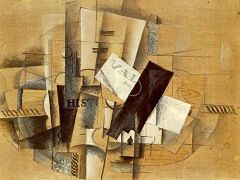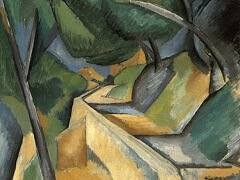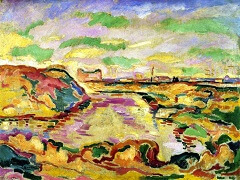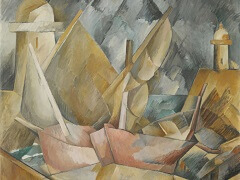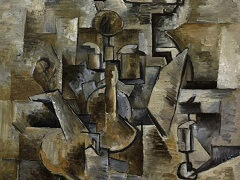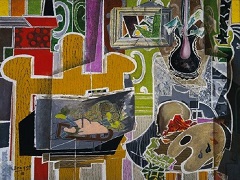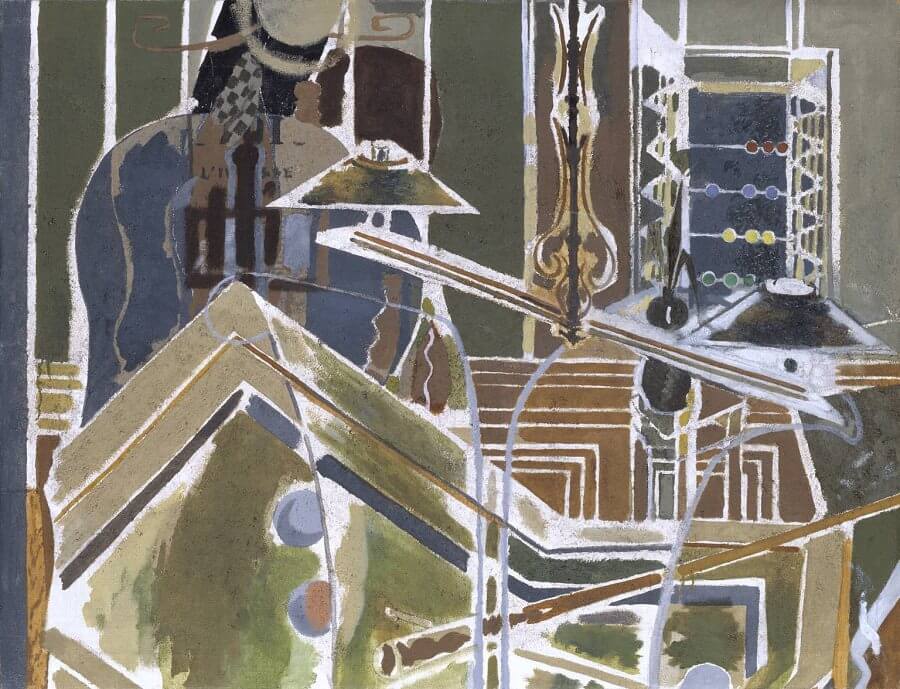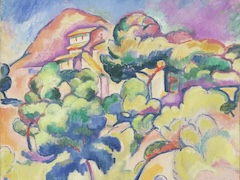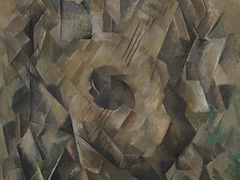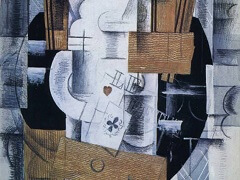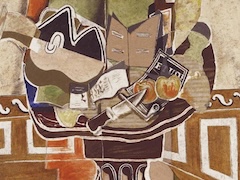Georges Braque Biography
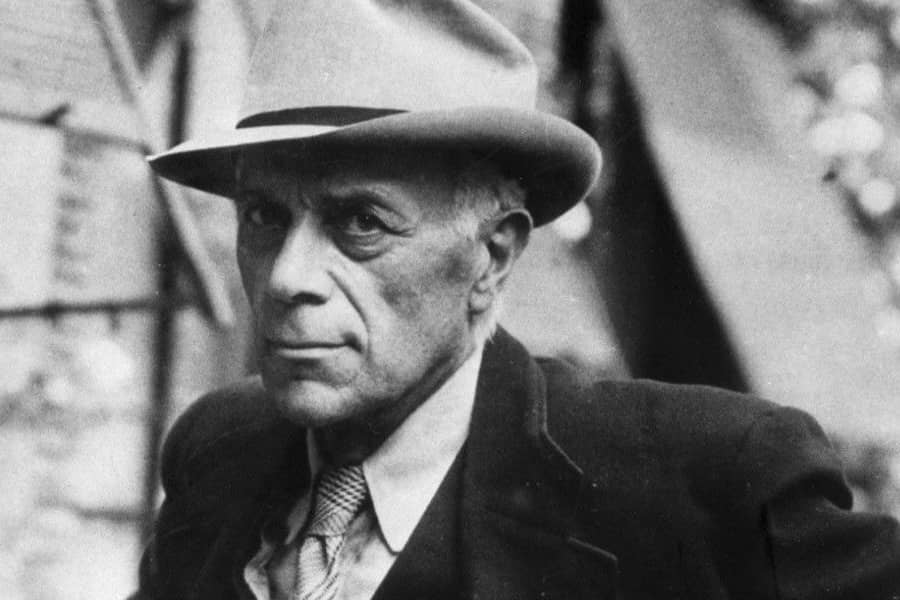
Georges Braque was born in Argenteuil, Val-d'Oise. He grew up in Le Havre and trained to be a house painter and decorator like his father and grandfather. However, he also studied serious painting in the evenings at the École des Beaux-Arts, in Le Havre, from about 1897 to 1899. In Paris, he apprenticed with a decorator and was awarded his certificate in 1902. The following year, he attended the Académie Humbert, also in Paris, and painted there until 1904. It was here that he met Marie Laurencin and Francis Picabia.
His earliest works were impressionistic, but after seeing the work exhibited by the Fauves in 1905, Braque adopted a Fauvist style. The Fauves, a group that included Henri Matisse and André Derain among others, used brilliant colors and loose structures of forms to capture the most intense emotional response. Braque worked most closely with the artists Raoul Dufy and Othon Friesz, who shared Braque's hometown of Le Havre, to develop a somewhat more subdued Fauvist style. In 1906, Braque traveled with Friesz to L'Estaque, to Antwerp, and home to Le Havre to paint.
In May 1907, he successfully exhibited works in the Fauve style in the Salon des Indépendants. The same year, Braque's style began a slow evolution as he came under the strong influence of Paul Cézanne, who died in 1906, and whose works were exhibited in Paris for the first time in a large-scale, museum-like retrospective in September 1907. The 1907 Cézanne retrospective at the Salon d'Automne greatly impacted the direction that the avant-garde in Paris took, leading to the advent of Cubism.
Braque's paintings of 19081913 began to reflect his new interest in geometry and simultaneous perspective. He conducted an intense study of the effects of light and perspective and the technical means that painters use to represent these effects, appearing to question the most standard of artistic conventions. In his village scenes, for example, Braque frequently reduced an architectural structure to a geometric form approximating a cube, yet rendered its shading so that it looked both flat and three-dimensional by fragmenting the image. He showed this in the oil painting "House at L'estaque". In this way, Braque called attention to the very nature of visual illusion and artistic representation.
Beginning in 1909, Braque began to work closely with Pablo Picasso, who had been developing a similar approach to oil painting. At the time Pablo Picasso was influenced by Gauguin, Cézanne, African tribal masks and Iberian sculpture, while Braque was mostly interested in developing Cézanne's idea's of multiple perspectives. A comparison of the works off Picasso and Braque during 1908 reveals that the effect of his encounter with Picasso was more to accelerate and intensify Braque's exploration of Cézanne ideas, rather than to divert his thinking in any essential way. The invention of Cubism was a joint effort between Picasso and Braque, then residents of Montmartre, Paris. These artists were the movement's main innovators. After meeting in October or November 1907, Braque and Picasso, in particular, began working on the development of Cubism in 1908. Both artists produced paintings of monochromatic color and complex patterns of faceted form, now called Analytic Cubism.
A decisive moment in its development occurred during the summer of 1911, when Georges Braque and Pablo Picasso painted side by side in Céret, in the French Pyrenees, each artist producing paintings that are difficult - sometimes virtually impossible - to distinguish from those of the other. In 1912, they began to experiment with collage and papier collé.
Their productive collaboration continued and they worked closely together until the outbreak of World War I in 1914 when Braque enlisted in the French Army, leaving Paris to fight in the First World War.
French art critic Louis Vauxcelles first used the term Cubism, or "bizarre cubiques", in 1908 after seeing a picture by Braque. He described it as 'full of little cubes', after which the term quickly gained wide use although the two creators did not initially adopt it. Art historian Ernst Gombrich described cubism as "the most radical attempt to stamp out ambiguity and to enforce one reading of the picture - that of a man-made construction, a colored canvas." The Cubist movement spread quickly throughout Paris and Europe.
Braque was severely wounded in the war, and when he resumed his artistic career in 1917 he moved away from the harsher abstraction of cubism. Working alone, he developed a more personal style, characterized by brilliant color and textured surfaces and following his move to the Normandy seacoast the reappearance of the human figure. He painted many still life subjects during this time, maintaining his emphasis on structure. During his recovery he became a close friend of the cubist artist Juan Gris.
He continued to work throughout the remainder of his life, producing a considerable number of distinguished oil paintings, graphics, and sculptures, all imbued with a pervasive contemplative quality. Braque, along with Matisse, is credited for introducing Pablo Picasso to Fernand Mourlot, and most of the lithographs and book illustrations he himself created in the 1940s and '50s were produced at the Mourlot Studios. He died on 31 August 1963, in Paris. He is buried in the church cemetery in Saint-Marguerite-sur-Mer, Normandy, France. Braque's work is in most major museums throughout the world.

